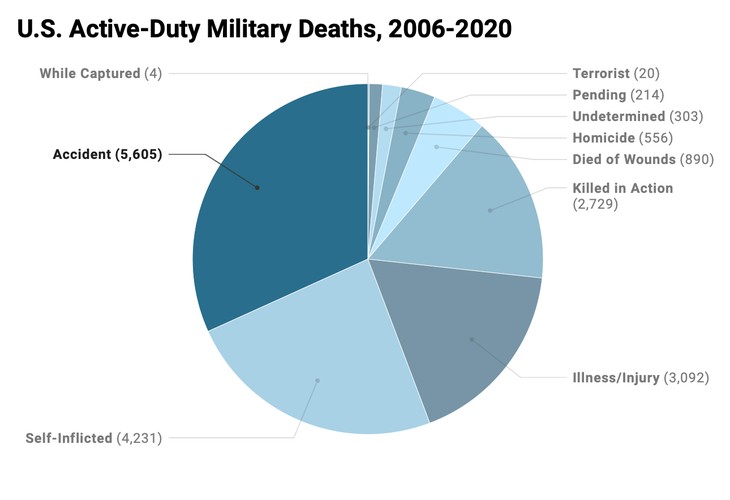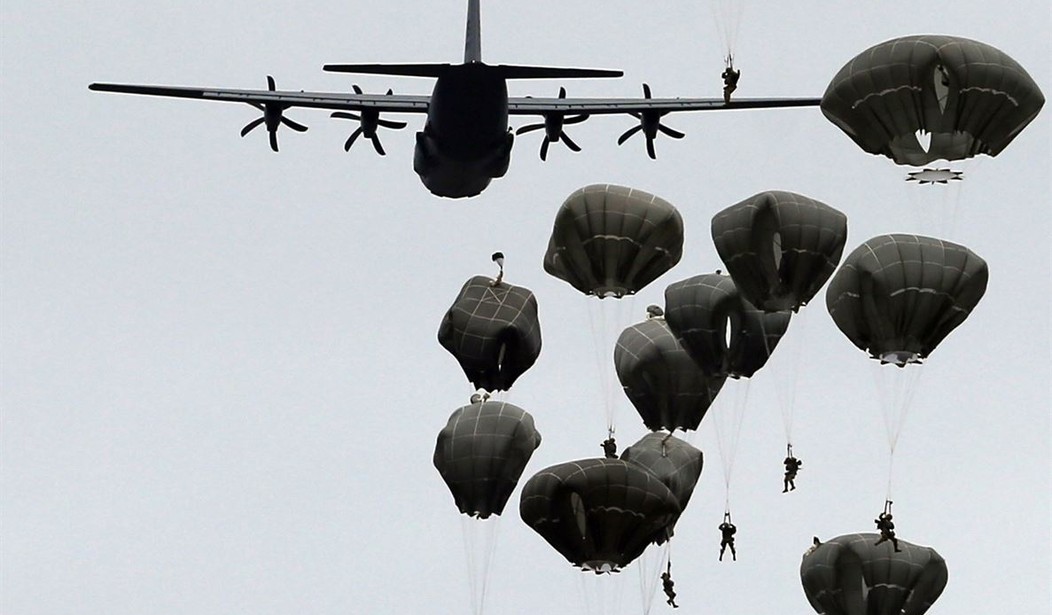I saw this news story yesterday and my BS meter went to 110 dBs.
Everybody knows the military has been having trouble hitting its recruitment numbers, and Republicans have been banging the drums about COVID vaccine mandates and the sudden swing to woke in the military.
Nope, says the AP and the current military brass. It’s that there is a sudden outbreak of scaredy-cat 18-year-olds.
While some Republicans blame the COVID-19 vaccine or “wokeness” for the Army’s recruiting woes, the military service says the bigger hurdles are more traditional ones: Young people don’t want to die or get injured, deal with the stress of Army life and put their lives on hold.
They “just don’t see the Army as something that’s relevant,” said Maj. Gen. Alex Fink, head of Army marketing. “They see us as revered, but not relevant, in their lives.”
Addressing those longtime issues has taken on greater urgency as the Army tries to recover from its worst recruiting year in decades, a situation aggravated by the tight jobs market. The Army is offering new programs, advertising and enticements in an effort to change perceptions and reverse the decline.
This is, in my humble opinion, some Grade-A BS.
Sure, we have all seen how Gen Z has, on the whole, been filled with a bunch of whiny little bi-atches. But a substantial fraction of our impressions of Gen Z come from the extreme online life of the generation; even given its large number of soy-boys and alphabet-obsessed kids, there are plenty of normal kids. We just don’t see them because we get overwhelmed by the sheer number of idiots.
Nobody tweets around TikToks of normal kids being normal. There are still plenty of them in the recruiting pool.
And let’s face it, the military has never been a safe occupation, but it is actually not particularly unsafe these days. Combat deaths at the height of the war on terror were terrible but hardly numerous by any historical standards. During the 1980s the death rate, mostly by training accidents, exceeded that of the war on terror years. Even during the war on terror itself, training accidents were more numerous than combat deaths.
Fink, the Army’s marketing head, said the top three reasons young people cite for rejecting military enlistment are the same across all the services: fear of death, worries about post-traumatic stress disorder and leaving friends and family — in that order. He said the Army wanted a better understanding of any additional barriers to service, beyond those top three.
By a “significant margin,” he said, the most common response beyond Nos. 1-3 was, “I will be putting my life on hold.” That was cited by more than 1 in 5 people surveyed.

The military has been trying to figure out why young adults are not choosing a military life, and their survey data shows that the woke turn hasn’t had much of an impact:
Those surveys were conducted over four months last spring and summer. They involved about 600 respondents, ages 16 to 28, per month. The Army discussed the general findings with The Associated Press but declined to provide detailed methodology, saying the surveys were done by a private research contractor and that licensing agreements limited the public release of some data collection details.
“Wokeness” is a slang term that originally described attentiveness to issues of racial and social justice. Some people and groups, especially conservatives, now use it in a derogatory sense implying what they see as overreactions.
I am in no position to directly dispute their survey data because there is no way to evaluate it without seeing the numbers and methods.
However, I can tell you why I think the conclusion that the woke turn and vaccine mandates are not serious problems is dead wrong: selection bias.
The military doesn’t actually recruit from the population as a whole; it recruits from a much smaller group of people who would normally find military life appealing. Their target market has always been very small.
The “stretch goal” of recruiting 65,000 people for the Army–which is 20,000 more than the 2022 number–shows how small that market actually is. Out of millions of people of military age, they need to find only 65,000 to reach a “stretch” goal.
The military has never been an attractive option for the vast majority of people, so surveying people to find that blindingly obvious fact out is absurd. What you actually need to know is why the demographic group who are most likely to want to join the military are now rejecting it as an option.
These are likely to be that small number of people who don’t like the “woke” part of the new military. Obviously so. The soy boys never wanted to live a military life in the first place, and their equivalent in earlier years wouldn’t have either. It is the rough and ready who are most likely to join. The ones who hunt and fish, love their football and are not particularly sensitive.
They are not looking to be ordered around by this guy:

There are still plenty of these people, and they are probably not looking forward to lectures about DEI. They want to accomplish things, not whine about them.
One other thing: our public schools spend endless amounts of time promoting the idea that America is the oppressor; this cannot be a benefit to recruiting.
In any case, no general survey is going to pick up on this, since the universe of people inclined to join the military has always been small. If you want to know why that particular group of people has declined the offer now, ask them. Not some randomly chosen group from a population that has never clamored to join the Marines.
Military recruitment has fallen through the floor rather suddenly. None of the variables found in these surveys didn’t apply since the military went all volunteer.
Clearly, the surveys are badly designed–by people who simply don’t understand the target market.








Join the conversation as a VIP Member